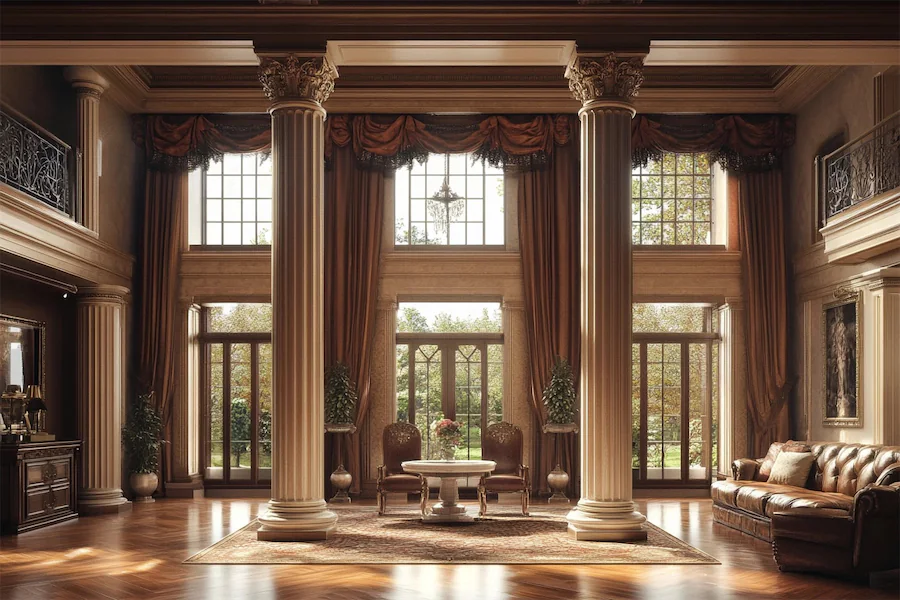High Victorian architecture, flourishing during the mid to late 19th century, is renowned for its eclectic and ornate designs. A prominent feature of this architectural style is the use of columns, which not only serve structural purposes but also contribute significantly to the aesthetic appeal of buildings. These columns often exhibit intricate detailing and a variety of stylistic influences, reflecting the diverse inspirations of the High Victorian era.
History and Origins of High Victorian Columns
The High Victorian Gothic movement, emerging around 1850, marked a departure from earlier, more restrained Gothic Revival styles. Architects like William Butterfield and George Gilbert Scott championed this approach, emphasizing bold polychromatic schemes and robust forms. Columns in this period drew inspiration from medieval designs, featuring complex carvings and a mix of materials. The use of polychrome decoration and varying textures became characteristic of High Victorian Gothic architecture.
Key Features of High Victorian Columns
High Victorian columns are distinguished by several notable features:
- Material Diversity: Utilization of various materials, including stone, brick, and cast iron, often combined to create textural contrast.
- Polychromatic Decoration: Incorporation of multiple colors within the column design, achieved through the use of different materials or painted finishes.
- Ornate Carvings: Detailed carvings featuring floral motifs, geometric patterns, and symbolic elements, reflecting the craftsmanship of the era.
- Structural Expression: Columns were not merely decorative but also expressed the structural integrity of the building, often exaggerated to convey strength and stability.
Applications of High Victorian Columns
High Victorian columns were employed across various building types:
- Religious Buildings: Churches and cathedrals featured grand columns supporting arches and vaults, enhancing the spiritual ambiance.
- Public Structures: Institutions like museums and town halls utilized imposing columns to convey authority and permanence.
- Residential Architecture: In affluent homes, columns adorned facades and interior spaces, symbolizing wealth and sophistication.
Considerations When Choosing High Victorian Columns
When incorporating High Victorian columns into contemporary designs or restorations, consider the following:
- Historical Accuracy: Ensure that the column design aligns with authentic High Victorian styles to maintain architectural integrity.
- Material Selection: Choose materials that replicate the original appearance while meeting modern standards for durability and maintenance.
- Craftsmanship: Engage skilled artisans capable of executing the intricate details characteristic of High Victorian columns.
Conclusion
High Victorian columns epitomize the grandeur and complexity of 19th-century architecture. Their rich ornamentation and structural prominence continue to inspire and inform architectural practices today, serving as enduring symbols of a transformative era in design history.
